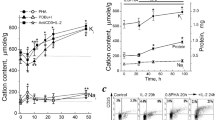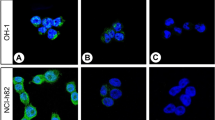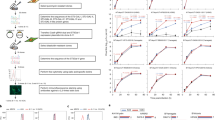Abstract
RECENT studies of the synthesis of deoxyribonucleic acid have suggested that the radiation-sensitive period may occur at a stage in the cell-cycle before the polymerization of new deoxyribonucleic acid begins, that is, during the G1 period1–3. It therefore appeared to be of interest to study, in more detail, the assimilation of the precursors into cells and their subsequent incorporation into deoxyribonucleic acid. With this object we have examined the uptake of thymidine labelled with tritium into mouse Ehrlich and Landschutz ascites cells in vitro, measuring the total activity present in the cell and the activity incorporated into deoxyribonucleic acid, as a function of time. The distribution of the precursor among the cells of the population was determined by autoradiography. 2 ml. aliquots of suspension containing about 108 cells were incubated at 37° in a medium containing 50 per cent ascitic fluid and 50 per cent fortified Hanks' medium4 (5 gm. glucose/l.). At the end of the incubation the cells were washed five times with ice-cold Hanks' medium and finally suspended in 4 ml. of the medium. Autoradiographs were prepared in the usual manner, the cells being air dried, fixed with 2 per cent acetic acid or with 45 per cent acetic acid in alcohol and washed before the application of the stripping film. Deoxyribonucleic acid was prepared from 2 ml. of the cell suspension using the detergent method of Kay, Simmons and Dounce5, the final product being dissolved in 2 ml. of water. The solutions of deoxyribonucleic acid and the cell suspensions were homogenized by treatment with ultrasonics before plating on aluminium planchettes. Determinations of tritium activity were made using a windowless flow counter working in the proportional region with an efficiency of about 15 per cent. Deoxyribonucleic acid contents of the cell suspensions and acid solutions were determined using the modified diphenylamine method of Burton6.
This is a preview of subscription content, access via your institution
Access options
Subscribe to this journal
Receive 51 print issues and online access
$199.00 per year
only $3.90 per issue
Buy this article
- Purchase on Springer Link
- Instant access to full article PDF
Prices may be subject to local taxes which are calculated during checkout
Similar content being viewed by others
References
Lajtha, L. G., Oliver, R., Kumatori, T., and Ellis, F., Rad. Res., 8, 1 (1959).
Holmes, B. E., Ciba Foundation Symp. “Ionizing Radiations and Cell Metabolism”, 225 (1956).
Bollum, F. J., Anderegg, J. W., McElya, A. B., and Potter, V. R., Cancer Res., 20, 138 (1960).
Paul, J., “Cell and Tissue Culture” (Livingstone, 1956).
Kay, E. R. M., Simmons, N. S., and Dounce, A. L., J. Amer. Chem. Soc., 74, 1724 (1952).
Burton, K., Biochem. J., 62, 315 (1956).
Allfrey, V. G., Mirsky, A. E., and Osawa, S., J. Gen. Physiol., 40, 451 (1956–57).
Pelc, S. R., and La Cour, L. F., Experientia, 15, 131 (1959).
Harris, H., Biochem. J., 72, 54 (1959).
Hughes, W. L., Bond, V. P., Brecher, G., Cronkite, E. P., Painter, R. B., Quastler, H., and Sherman, F. G., Proc. U.S. Nat. Acad Sci., 44, 476 (1958).
Author information
Authors and Affiliations
Rights and permissions
About this article
Cite this article
CRATHORN, A., SHOOTER, K. Uptake of Thymidine and Synthesis of Deoxyribonucleic Acid in Mouse Ascites Cells. Nature 187, 614–615 (1960). https://doi.org/10.1038/187614a0
Issue Date:
DOI: https://doi.org/10.1038/187614a0
This article is cited by
-
Thyminnucleotid-Synthese und Proliferation von Knochenmarkzellen bei megaloblastären Anämien unter der Einwirkung von Vitamin B12
Klinische Wochenschrift (1967)
-
�ber Chromatin und DNS-Synthese im Nucleolus
Zeitschrift f�r Zellforschung und Mikroskopische Anatomie (1963)
Comments
By submitting a comment you agree to abide by our Terms and Community Guidelines. If you find something abusive or that does not comply with our terms or guidelines please flag it as inappropriate.



